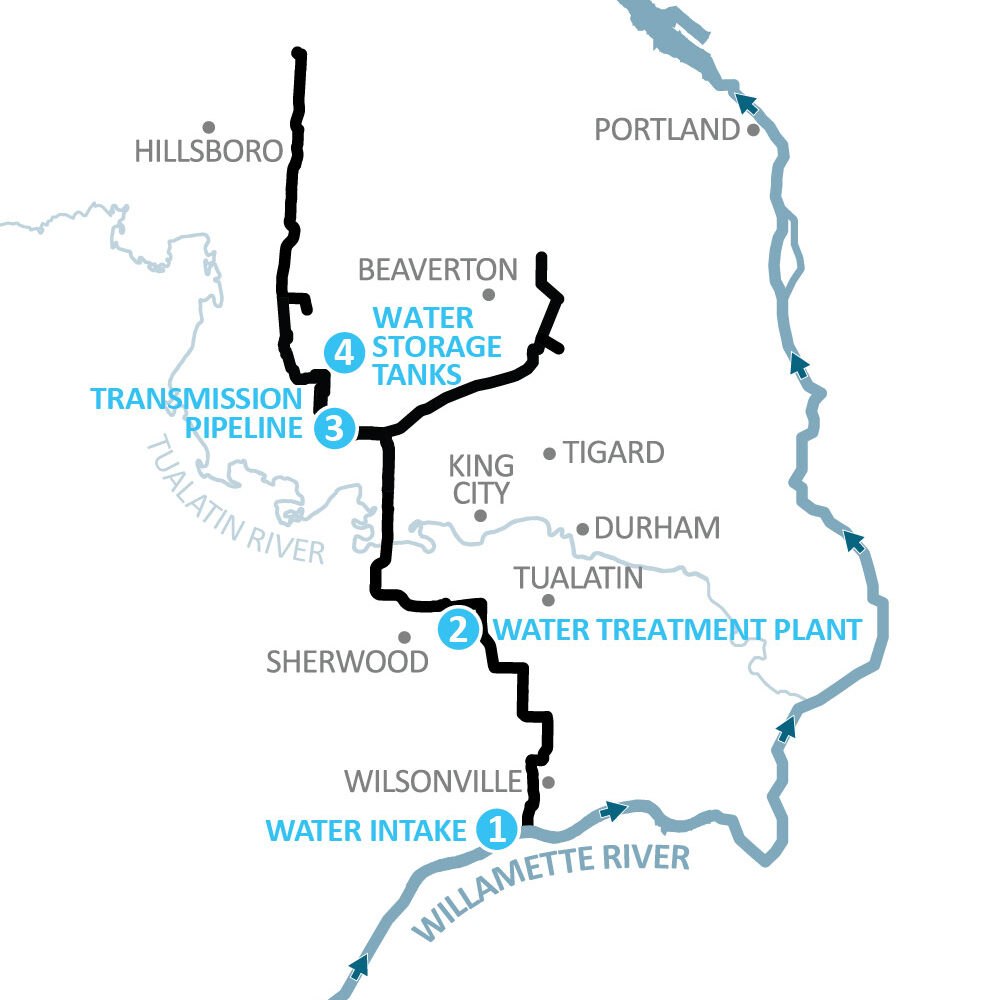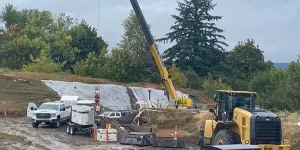
Hillsboro Tribune, Olivia Singer Tuesday, February 19, 2019
There are seven years left in the development of the Willamette Water Supply Program.
Roughly halfway through a massive $1.2 billion project creating an additional water source for cities across Washington County, including Hillsboro, officials say it’s still on track to go live in 2026, and the next few years will see lots of construction in the region.

COURTESY PHOTO – A map and schedule of planned projects within the new water system development.
Since 2012, the Tualatin Valley Water District and the city of Hillsboro have been partnering to build the Willamette Water Supply System, which will draw in water from the Willamette River near Wilsonville through a new pipeline system to Hillsboro.
It’s an effort to increase water supply for the projected growth Hillsboro and neighboring cities are expecting to see in the next couple decades, an opportunity for Hillsboro to have more than one water source — which most surrounding cities do — and it’s a seismically resilient water system, TVWD media and community relations coordinator Marlys Mock said.
Coordinators are proud of the work they’ve done up to this point, Mock said, with 96 percent of the money spent on the project so far spent locally, all completed construction done by local contractors, and with minimal disruption construction-wise, coordinating with local jurisdictions to build the pipeline at the same time as road projects, lessening traffic and construction impacts and reducing project costs.
“(The project) has been broken up (into sections) partly because of jurisdictional boundaries, but also so that local contractors would have an ability to bid and win the work,” Mock said. “We didn’t want such an enormous project that it would take an international company to do, and so that effort has worked because so far all of our contractors are local.
The pipeline will run through South Hillsboro — from Southeast Blanton Street to Tualatin Valley Highway, to Southeast Frances Street and Southwest Farmington Road to Southeast Blanton Street — with some of that portion of the project’s construction already underway. Project managers were able to coordinate with the new construction happening in South Hillsboro, building the pipeline at the same time the major parts of construction take place, Mock said.
More local construction, including the Cornelius Pass Pipeline Project from Southeast Frances Street to Highway 26, is expected to begin in 2021 and be completed in 2023, according to the project map.
The additional water supply will serve well for the region’s future, Mock said.
“After a big earthquake, like what they are expecting, this is the only system that will be up and running,” Mock said. “So for the regional recovery aspect and trying to get water back online in weeks or days instead of months or longer, (it is) really important for that.”
Mock added, “Again, the additional source for Hillsboro so that they are not so dependent on one, and then we will still have a connection with the City of Portland, but this also gives us that local ownership and control. … To own your own system, that’s pretty great.”
Mock said other cities, including Beaverton, are likely to join in on the partnership. But whether they choose to or not, the water system will serve as an emergency backup for them.
“We hope to have emergency connections along the way to other communities, so even if the City of Sherwood decides they don’t want to become part of this partnership, they still have an emergency intertie so that if something happened to their source, they could get water from us,” Mock said. “But the more partners that come on, the better.”
The development of an additional water supply through a partnership “supports the region’s plans for responsible growth within the urban growth boundary,” coordinators said. “There is enough water for today — but steps need to be taken now to have an adequate supply to meet future demands and provide greater safety and reliability.”










